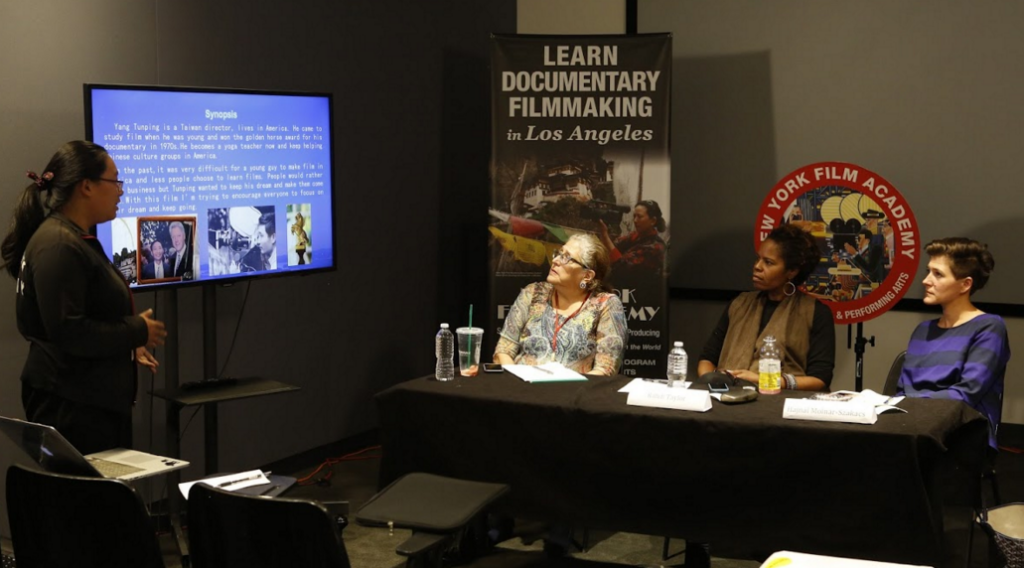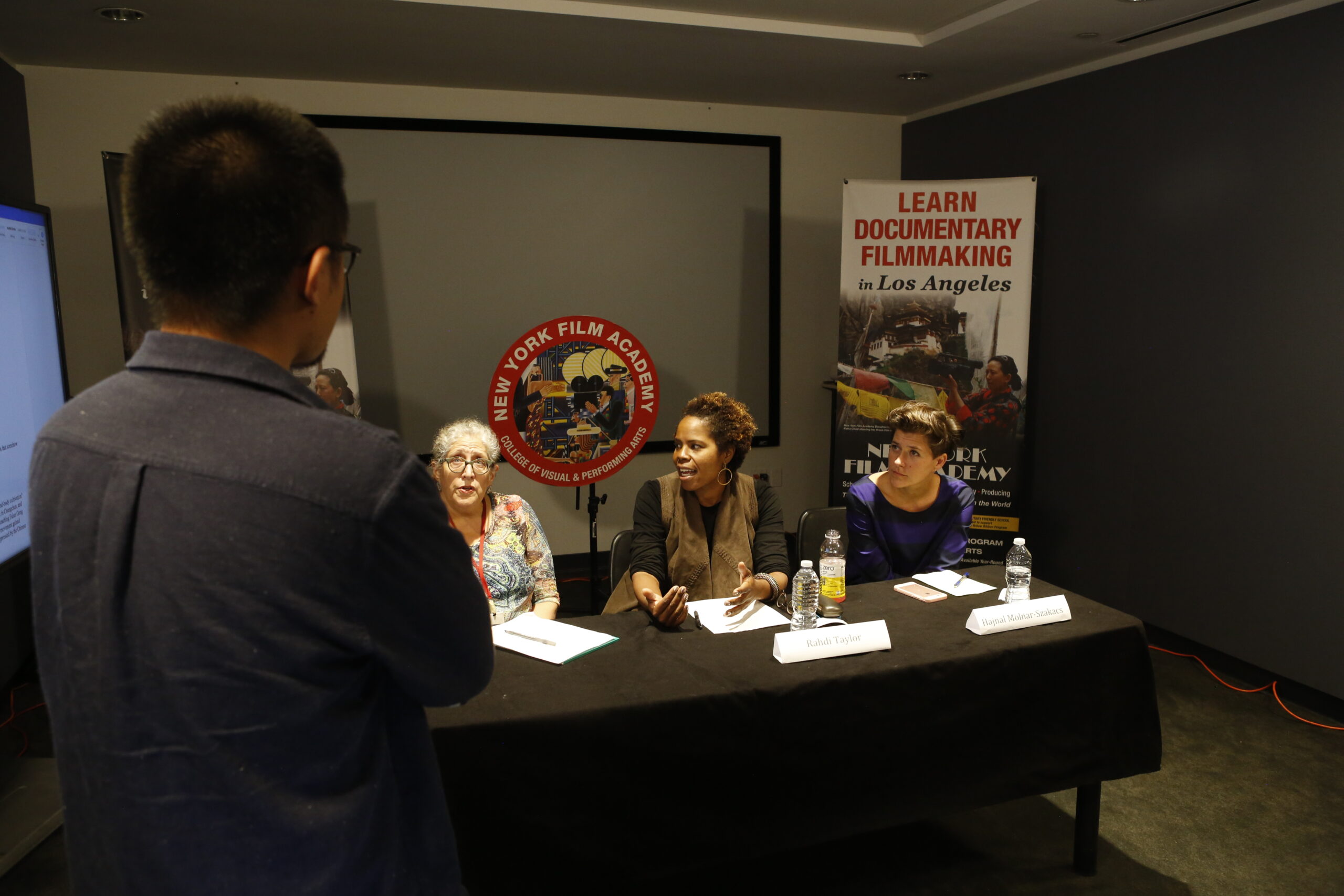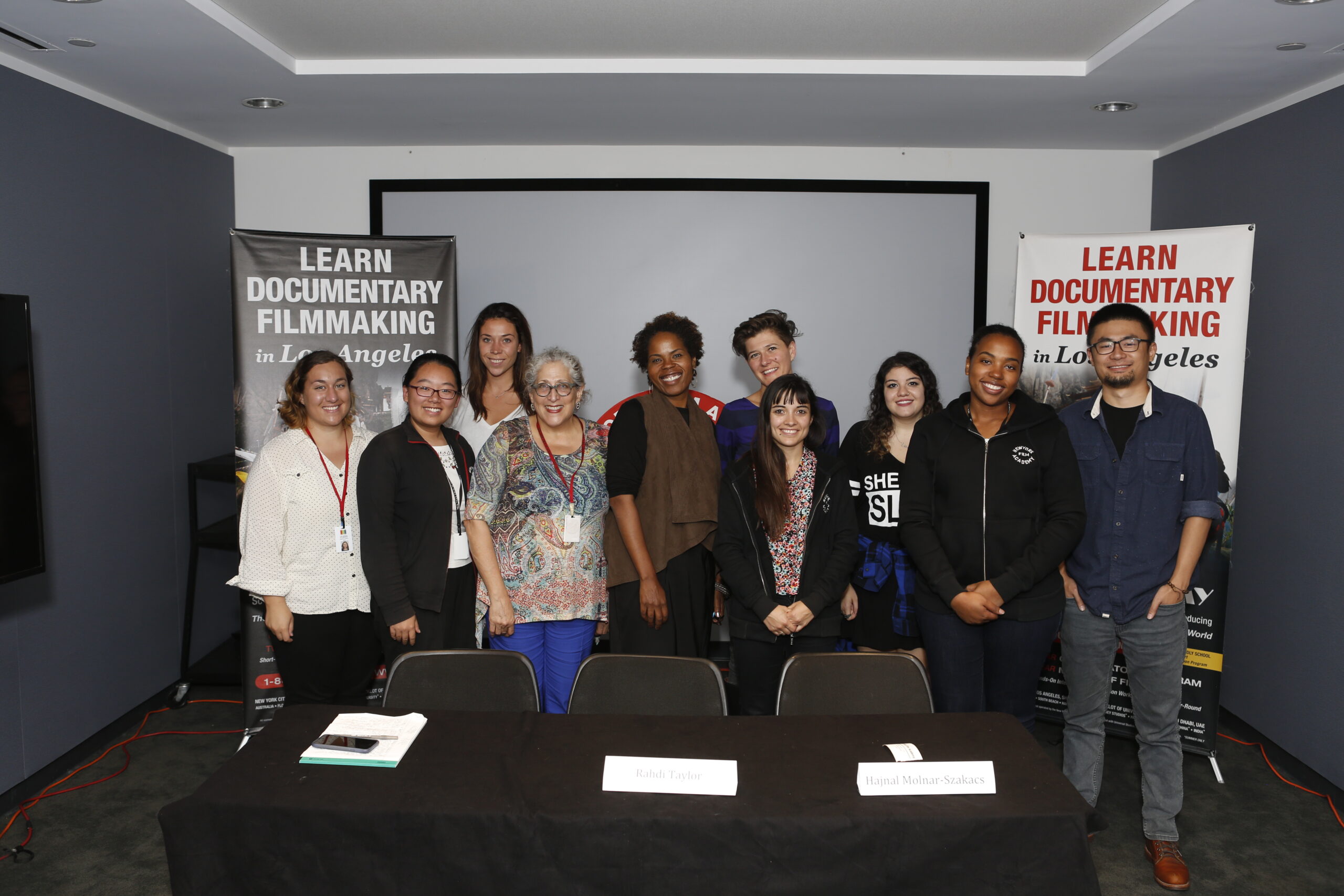On Monday, October 17, 2016, two representatives from the Sundance Documentary Program, Rahdi Taylor (Film Fund Director) and Hajnal Molnár-Szakács (Film Fund Coordinator), came to New York Film Academy’s Los Angeles campus for the Second Annual Pitch Practice session. This is a chance for NYFA LA documentary students to present their works in progress and receive feedback from an expert panel.

The women from Sundance began their presentation by explaining what the Sundance Institute hoped to get out of the documentaries they take on.
“We talk about films having meaning and moral purpose. When we say moral, I mean in the sense that the stories matter somehow to someone. There must be a journey ahead. We’re rarely going to pick a past facing bio-doc or a Ken Burns kind of epic piece. We want an uncertain journey that lies ahead, the outcome of which really matters to somebody,” said Taylor.
“It’s important that people understand that one can participate in the Sundance Institute without participating in the festival,” Molnár-Szakács began. Though they share a name, the festival and institution operate independently of one another.
Between 1.5 million and 2 million dollars a year is dedicated to the Sundance Institute both domestically and internationally. Characteristics they’re looking for in documentaries includes artful, creative, cinematic, pushing the boundaries of what documentaries are, a film that can reach audiences, and something that will be a catalyst for change.

The Institute awards financial grants, which are non-recoupable; meaning you don’t have to pay them back. The grants grew out of the Soros Foundation. Initially, the fund was established with a social justice focus, but that focus broadened over the years.
Molnár-Szakács expounded that idea saying, “It is partial funding. Whatever the budget of the film, we’re not necessarily funding the entire film, unless you’re shooting some place it’s very cheap to make the film.”
Our judges perked upon hearing one student’s pitch about trying to find love over age 65. “Docs can be really heavy, so it’s nice to see something lighter,” Taylor said. The pitch was for a 30 minute short, but they encouraged the director to try for a feature. They felt the story could expand up to at least two years.

They also spoke to the students about how to secure funding. “No one is going to buy a finished film,” Taylor said. She continued, “Make sure if you get the funding you secure funding from more than one major source.” As an example, they said if you were to make a movie about cars and you had to fund from Ford, you’d also want to get Chrysler or Prius to fund you as well, or organizations like Sundance and PBS won’t pick up the film.
We spoke to one student, Mira Hammour, about her experience. “This was my first time pitching. I got a lot of good feedback and I feel confident going into my next pitch.”
New York Film Academy would like to thank Rahdi Taylor and Hajnal Molnár-Szakács for taking the time to help our students improve their pitching technique. For more information on The Sundance Institute’s Documentary Fund Grant click the link here.